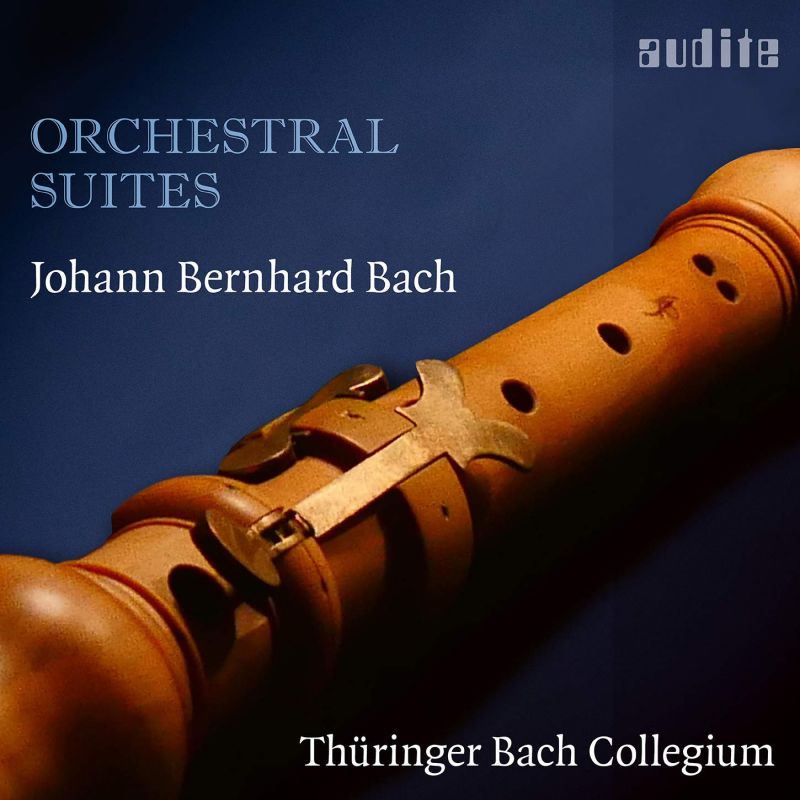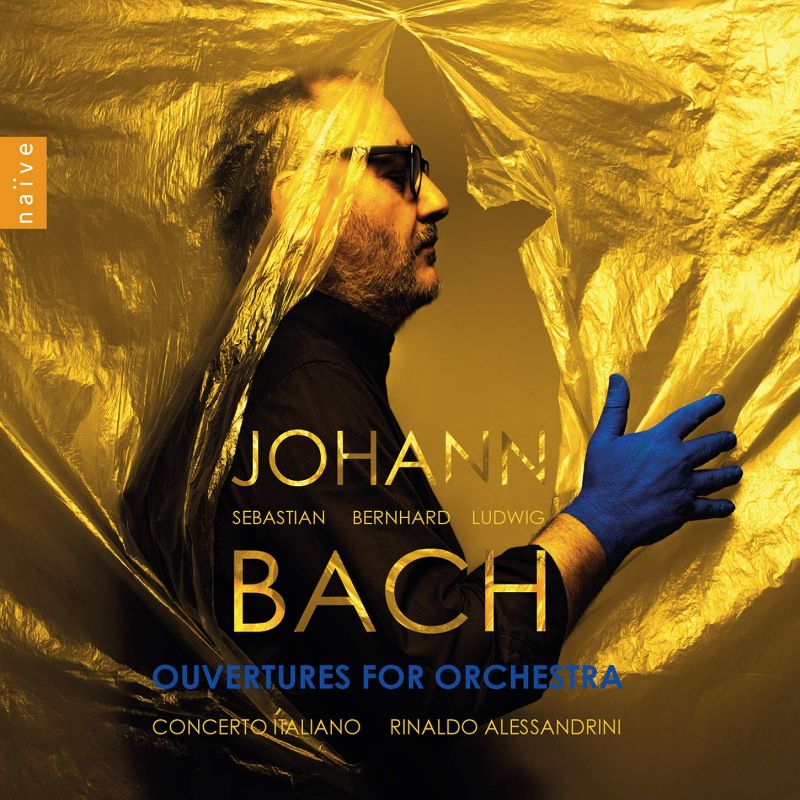JS, JB & JL BACH Overtures for Orchestra. JB BACH Suites
View record and artist detailsRecord and Artist Details
Composer or Director: Johann Bernhard Bach
Genre:
Orchestral
Label: Audite
Magazine Review Date: 12/2019
Media Format: CD or Download
Media Runtime: 82
Mastering:
DDD
Catalogue Number: AUDITE97 770

Tracks:
| Composition | Artist Credit |
|---|---|
| Orchestral Suites Nos 1-4 |
Johann Bernhard Bach, Composer
Johann Bernhard Bach, Composer Thüringer Bach Collegium |
Composer or Director: Johann Sebastian Bach, Johann Ludwig Bach, Johann Bernhard Bach
Genre:
Orchestral
Label: Naïve
Magazine Review Date: 12/2019
Media Format: CD or Download
Media Runtime: 130
Mastering:
DDD
Catalogue Number: OP30578

Tracks:
| Composition | Artist Credit |
|---|---|
| (4) Orchestral Suites |
Johann Sebastian Bach, Composer
Concerto Italiano Johann Sebastian Bach, Composer Rinaldo Alessandrini, Conductor |
| Suite No 3 |
Johann Bernhard Bach, Composer
Concerto Italiano Johann Bernhard Bach, Composer Rinaldo Alessandrini, Conductor |
| Overture |
Johann Ludwig Bach, Composer
Concerto Italiano Johann Ludwig Bach, Composer Rinaldo Alessandrini, Conductor |
Author: Lindsay Kemp
Elsewhere Alessandrini shows that he has no auto-pilot for these pieces, only lively ideas in plenty. Normally racing dances such as the Réjouissance and Badinerie are calmly measured, as are the Ouvertures, though never in the same way twice. The First Suite’s Courante flaunts a rather deliberate inégal while the Forlane stamps like a snorting horse. The Second Suite’s Rondeaux is surprisingly brisk, while its Sarabande refuses to allow itself to fixate on its treble-bass canon, concentrating instead on light and natural phrasing. The Third Suite’s famous Air is presented not as a melody with subservient accompaniment but as an intricate and lovingly drawn contrapuntal web.
Any performance with as many ideas as this will invite dislikes (I have a bit of a problem with the intermittently clodhopping bass in the First Suite’s Passepied), but overall I’m sure the lasting impression for many will be of a joyous and refreshing encounter with familiar music, served with a meticulous and constantly imaginative attention to details of phrasing and articulation, a crispness of ensemble and a bright and bracing transparency of texture, that may not have been matched since Musica Antiqua Köln’s brilliant but less yieldingly human Archiv recordings in the 1980s.
Alessandrini augments the four Bach Suites on this two-disc set with a suite each by two of his slightly older cousins, Johann Bernhard and Johann Ludwig, both of them more Telemann-like and closer in manner to the form’s French origins than their more famous counterparts. They are welcome in themselves, but also have the effect of emphasising just how contrapuntally rich Sebastian’s suites are.
Ludwig’s Suite is the only one of his to survive, as it happens, but we are luckier with Bernhard, for there are four of his left to us, mainly thanks to the interest taken in them by Sebastian, who had three of them copied out to perform alongside his own at the Leipzig Collegium Musicum in the 1730s. All four appear in their own right on a disc from the Thüringer Bach Collegium, a newish group formed to explore just this kind of Bach hinterland and who, led by the violinist Gernot Süssmuth, engage fully with the music’s bright mix of movement-types, including some – such as its Caprice, Fantaisie and a couple of French-style character-pieces – not used by Sebastian. Playing one-to-a-part, they find all the nimble energy needed for the likes of the Rigadons and Passepieds, as well as the soulful melody installed in the sweetly rapt Sarabandes and Airs, including one in the G major Suite that is in real ‘Air on the G string’ territory. The sound is intimate, transparent and not always ideally blended, but it is altogether more present and engaging than in the recording made a little while ago by L’Achéron (Ricercar, 2/17), whose larger forces sound squidgy and distant by comparison. The Thuringians also give us a bonus in ‘La Tempête’, the little encore – actually a short overture composed in 1691 by Steffani – which Sebastian added to the G major Suite for his Leipzig listeners’ entertainment.
Discover the world's largest classical music catalogue with Presto Music.

Gramophone Digital Club
- Digital Edition
- Digital Archive
- Reviews Database
- Full website access
From £8.75 / month
Subscribe
Gramophone Full Club
- Print Edition
- Digital Edition
- Digital Archive
- Reviews Database
- Full website access
From £11.00 / month
Subscribe
If you are a library, university or other organisation that would be interested in an institutional subscription to Gramophone please click here for further information.




